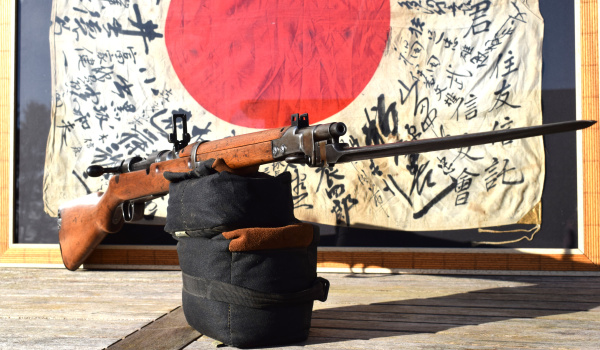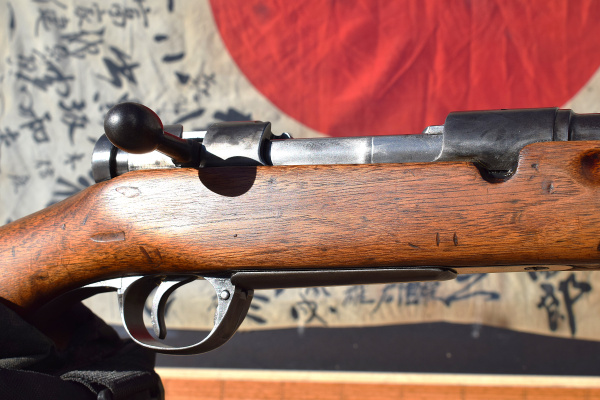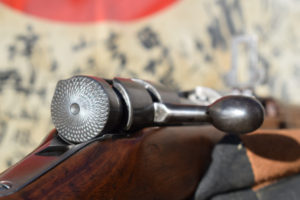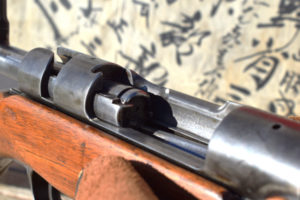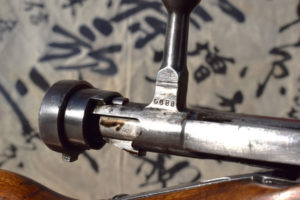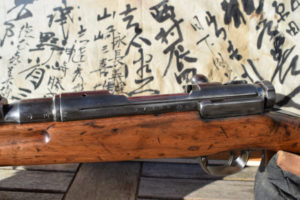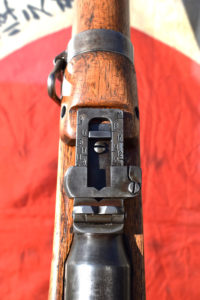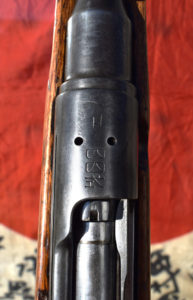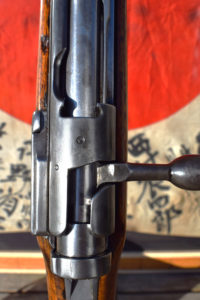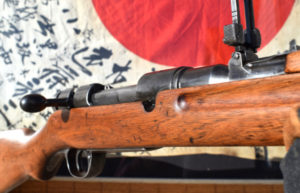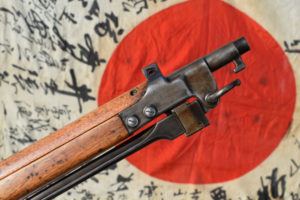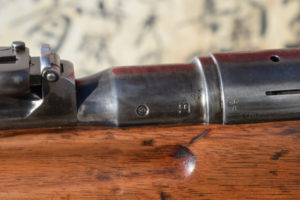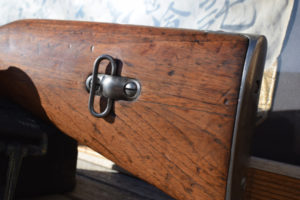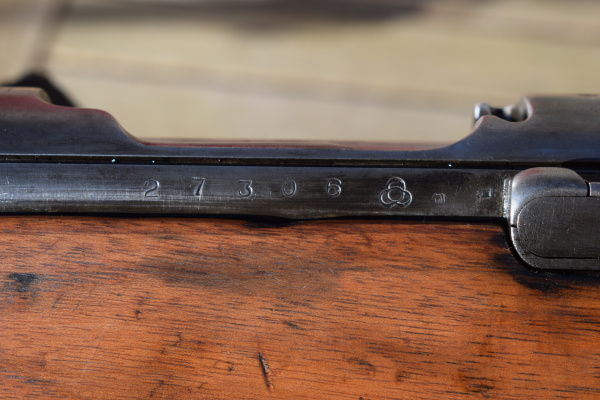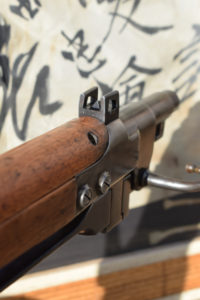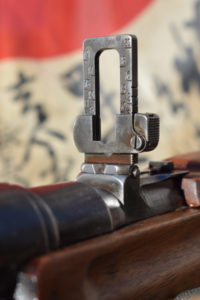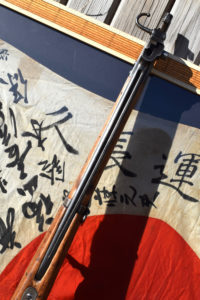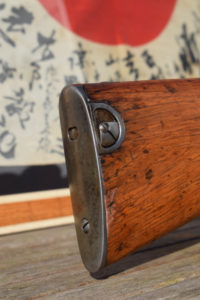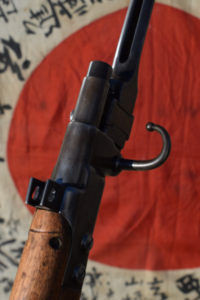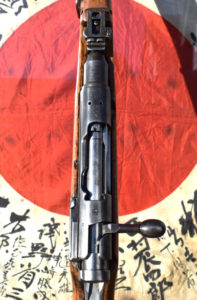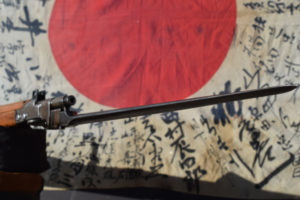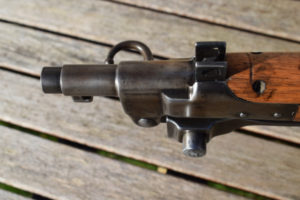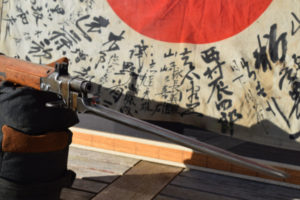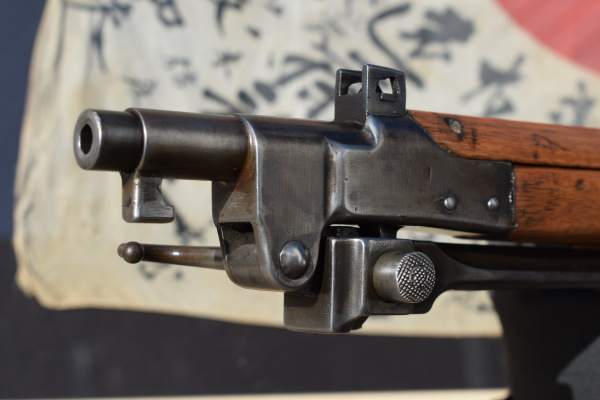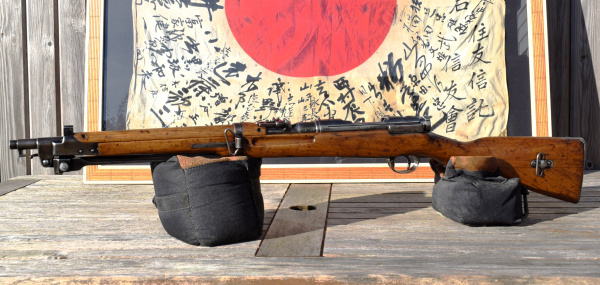Japanese Type 44 Carbine…………………(F 1199)
Created on January 25th 2025
Fine Type 44 Arisaka Carbine
A standard Arisaka Type 38 action Carbine based upon the Mauser, but differing in a few details. The action is now renowned for its strength. Alongside the rifle version of the Type 38, two Carbines were developed for the Cavalry, the first the Type 38 followed the Type 44 which was basically the same but included a folding bayonet. The “Type” designation actually has little to do with the year in western terms but, is in reference to the number of years the Emperor Meiji had been in power. In western cronology, Type 44 actually equates to 1911 – it is easy to mix things up! The basic action, the type 38 was developed in 1905 and was a very close copy of the Mauser in use with the Imperial German Army’s. The Gewehr 98, which was proving itself all over the world in different locations.
As mentioned above, there are differences between the two and most obvious is the seperate Mushroom-head cocking piece/ safety device. The other main difference is internal, in that the Arisaka version cocks on closing where as the Gewehr does the oposite. The rear end of the bolt has a superbly decorated, slightly domed end to the cocking piece. A notch at about the ten oclock position is the safety indicator. The domed decorated face allows purchase from the open palm of the hand, in wet or sliperry conditions; with a small amount of pressure exerted thus, turning it clockwise, applies the safety. The Japanese preferred this as they were very aware of the conditions the rifle would have to function within and knew the habits of their troops. It was a brave departure from convention, but the courage of their convictions held and they were prooved right.
Chambered as the Type 38 rifle and carbine in 6.5mm x 51R, with a five shot internal magazine. 6.5mm is a very accurate round consequently the carbine sights are actually graduated to a remarkable 2000 meters! It theoretically might be possible to shoot that far, but it is my feeling that they were possibly only thinking about suppressing fire at that kind of distance. I really don’t see anybody pulling off a 2000 meters shot from horseback ! These weapons although they were used in the Second World War were primarily issued in the period of the Second Sino-Japanese War and the Russo-Japanese War. Through those conflicts they eventually concluded the round did not posess the knock-down power required and changed up to the 7.7mm.
This is a very well presented carbine, with matching numbers on the bolt stem, as completely stripped to the last screw and cleaned, re-oiled and assembled. It looks good, the timber is in good condition as is the metal work. Wear is even all over externally and nothing jumps out as out of place within the patina. The bore is in very good condition for a 6.5, although obviously used – so it has “been there.” Both the afore mentioned conflicts really reached to a dark level of cruelty within the human condition – one has to wonder what this weapon has witnessed! Those conflicts made the second world war look like a walk in the park in comparrison. (Not decrying the immense effort, sacrifice and hardships of any conflicts) The action is fine condition and the carbine has just been re-proofed. It functions smoothly, demostrating the characteristics of a well used battle rifle. The timber shows all the signs of a miltary life – as expected but there are no splits or failures of any consequence. A good even semi-gloss patina has built up over the surface. Interesting feature that the Japanese were very well aware of was the abundence of unwanted water in the jungle, so they included a water run-off notch in the woodwork. On the Type 44 this appears as a notch in the wasteline of the timber agains the receiver ring.
The side wall of the action shows the serial number ” 27306″ and the four cannon balls of the Koishikawa Arsenal of Tokyo. Next to the last are two more markings (undecipherable) usually the series and an inspector or subcontractor. On the crest of the receiver the Imperial Crysanthnum has bee removed and the characters for Type 44 remain. Two horizontal gass escape holes emerge on the top of the receiver. Other arsenal and inspection marks appear on the balance of the rifle. The bolt carries a number on the stub which relates to another rifle captured at the same time, but does match its extractor so came as one. Standard ladder carbine rear sight with protected front sight. Side mounts for sling. Typically ingenious opening cover in butt-plate for storage of two cleaning rods a/f. Sliding dust cover removed.
The permanently attached folding bayonet could probably merrit its own page, as it is as ingenoius as it is dastardly. In brief, the spike is constructed as a flattened tri-corn spike of about 14″ in length. It has a deep blood run along the top and a sharpened screw-driver type tip. The release catch is sprung to close and lock, but is easily pressed sideways to release. It locks into position or will lock reward when closed within a purposely machined groove to avoid snagging. Besides this they also equipped it with its own quillion mounted on the RHS which will effectively snap an opponents blade. Its a clever and effective design and must have been a fearsome weapon in trained hands.
Overall the carbine measures 38″ in length. The rounded barrel is 18.1/2″ long and the trigger Pull is 13.1/4″ to centre. This is an unusual carbine to find on this side of the Pond and carbine collectors should take note as a possible addition to the collection. It should be a good shooter but one will never know until the next keeper steps up and puts it through its paces. Proofed and ready to go.
Stock No’ F 1199 – FAC required
£ 1175.
Comments Off on Japanese Type 44 Carbine…………………(F 1199)
